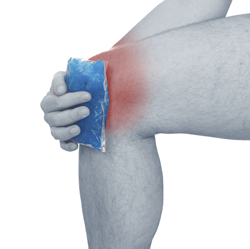The genomic determinants of inflammation
Following encounter with an inflammatory stimulus, a complex gene expression programme is deployed by inflammatory transcription factors. The products of these genes are responsible for recruiting and activating leukocytes, increasing vascular permeability, protecting inflammatory and tissue cells from apoptosis, and eventually for orchestrating tissue repair. While the identity of many inflammatory transcription factors is known (NF-kB, IRF and AP-1 families), quantitative models describing how their interactions with genomic sequences lead to normal or pathological outcomes are not available. Seeking to address this, the EU-funded MODEL-IN project aimed to unravel the interplay between such transcription factors and genomic organisation using innovative technologies and computational approaches. Given that any transcription factor recognises a specific – albeit relatively degenerate – sequence pattern of 6–20 base pairs in length, partners set out to determine the binding specificities of the members of the NF-kB family of transcription factors. Experimental work in an animal model of endotoxin-induced septic shock validated the importance of NF-kB sites in controlling immune responses through regulating expression of the IkBa gene. In addition, the consortium characterised for the first time the genomic repertoire of regulatory elements controlling the expression of inflammatory genes in mouse macrophages. Data indicated that the function of inflammatory transcription factors is governed by their interaction with cell-type–specific master transcriptional regulators and the accessible genomic regulatory elements. Also, the role of histone and other chromatin proteins in allowing access of inflammatory transcription factors to DNA was determined. Through the generation of novel models describing the activity of inflammatory transcription factors in a quantitative manner, partners wished to understand the genomic alterations that occur during inflammation. Another important objective of this consortium was to create integrative models, providing quantitative descriptions of the functional activity of transcription factors induced or activated in response to stimulation. To this end, scientists developed an algorithm that incorporated gene expression data within dynamic models of the level of response of gene transcription by biologically meaningful parameters. MODEL-IN work dissected the interplay of inflammatory transcription factors with specific DNA elements to orchestrate gene expression in response to inflammation. The novel insights gained has highlighted the importance of an accurate control of the signalling systems involving inflammatory transcription factors in mediating immune responses.

